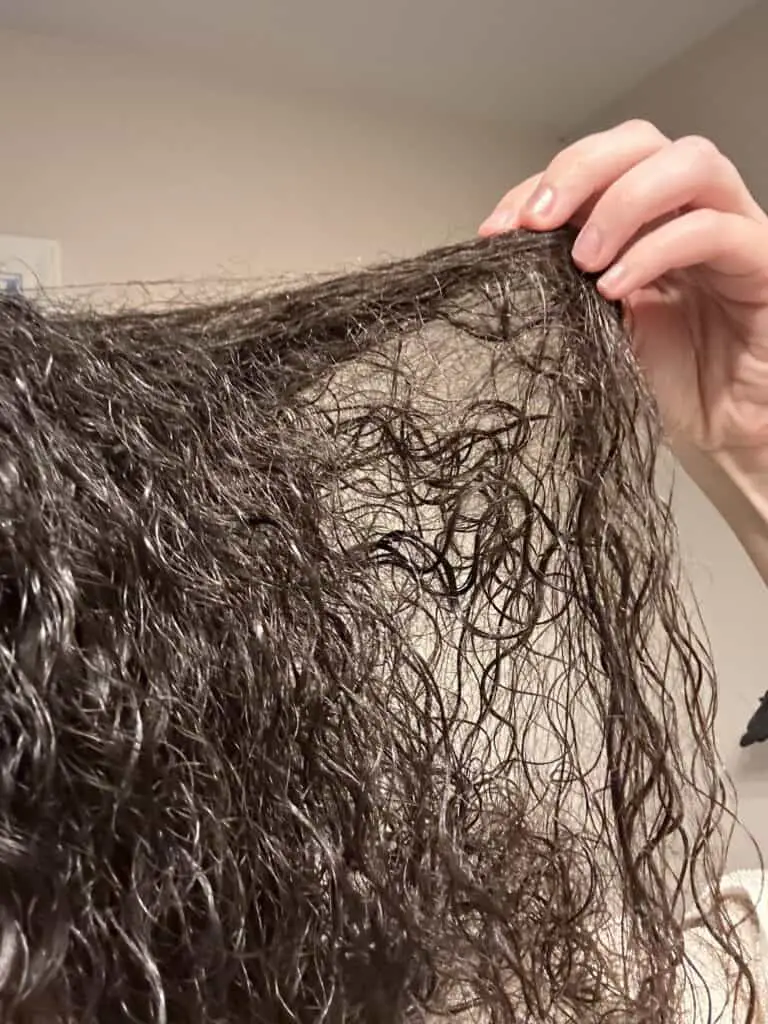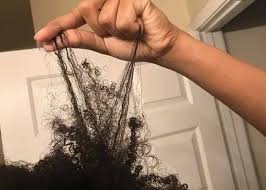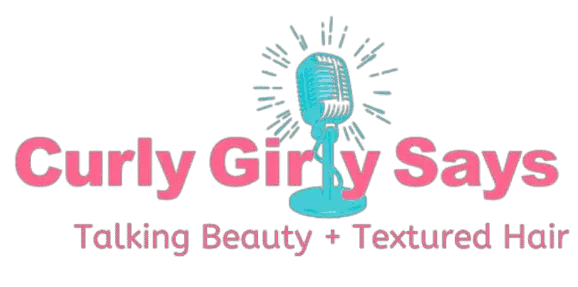Last Updated on July 11, 2025 by Doris Jean
Understanding the root causes of hair webbing and implementing targeted prevention strategies can help you maintain healthier, more manageable hair. You’ll discover effective techniques for keeping your strands properly moisturized, preventing product buildup, and establishing routines that work specifically for your hair type and texture.
What Is Hair Webbing?
Hair webbing occurs when individual hair strands stick together and interweave, creating thin, web-like formations. This condition differs from traditional tangles and matting in its appearance and causes.

Hair webbing primarily results from insufficient moisture, which prevents hair cuticles from lying flat and causes strands to cling together. When your hair lacks proper hydration, the raised cuticles create friction between strands, leading to the characteristic web-like tangles that can cause significant breakage if not addressed properly.
Characteristics of Hair Webbing
Hair webbing appears as thin, transparent sheets of hair that resemble spider webs. Your hair strands cling together and form flat, interconnected patterns rather than typical knots or tangles.
The condition occurs when your hair cuticles fail to lie flat against the hair shaft. This causes individual strands to grab onto each other and create a mesh-like structure.
Fine hair and curly hair are most susceptible to webbing. Fine hair lacks weight and body, making strands more likely to stick together. Curly hair’s natural texture creates more opportunities for strands to interweave.
You may notice webbing when your hair is wet or damp. The strands appear stretched and thin, almost like plastic wrap. This differs from the bulky, dense appearance of matted hair.
Hair Webbing vs. Matting and Knotting
Hair webbing creates flat, thin sheets of interconnected strands. Hair matting forms dense, compacted clumps that feel thick and heavy.
Webbing involves individual strands that cling together but remain relatively separate. Matting occurs when multiple strands twist and lock together tightly, creating solid masses.
| Hair Webbing | Hair Matting |
|---|---|
| Thin, web-like sheets | Dense, thick clumps |
| Strands remain somewhat separate | Strands lock together completely |
| Often transparent appearance | Opaque, solid masses |
| Easier to separate | Difficult to detangle |
Knotting involves specific points where strands twist together. Webbing spreads across larger sections of hair without forming distinct knots.
Hair Webbing vs. Stringy Hair
Stringy hair hangs in separate, limp strands that lack volume and body. Hair webbing creates connected sheets where strands stick together horizontally.
Stringy hair typically results from excess oil, product buildup, or lack of texture. Webbing occurs due to insufficient moisture and raised cuticles on the hair shaft.
You can separate stringy hair by running your fingers through it. Webbed hair requires more careful detangling to avoid breakage.
Stringy hair maintains its individual strand structure. Webbed hair loses this separation as strands adhere to each other across multiple sections.
Understanding the Causes of Hair Webbing

Hair webbing develops when multiple factors compromise your hair’s structure and manageability. Dryness weakens hair strands, product buildup creates sticky residue that binds hair together, damaged cuticles increase friction between strands, and environmental stressors further deteriorate hair health.
Dryness and Dehydration
Dry hair becomes brittle and prone to tangling, creating the perfect conditions for webbing. When your hair lacks moisture, the cuticles lift and create rough surfaces that easily catch on neighboring strands.
Low porosity hair often struggles with moisture absorption, while high porosity hair loses moisture quickly. Both conditions lead to dehydration that makes hair more susceptible to webbing.
Your scalp’s natural oil production affects hair moisture levels. Infrequent washing can lead to product buildup that blocks moisture, while overwashing strips essential oils.
Weather conditions play a significant role in hair hydration. Low humidity environments draw moisture from your hair, while high humidity can cause already dry hair to become frizzy and tangled.
Product Buildup
Heavy styling products create a sticky film on your hair strands that acts like glue between individual hairs. This buildup is particularly problematic for people with fine or curly hair textures.
Silicones in hair care products can accumulate over time, especially non-water-soluble varieties. While they initially smooth hair, excessive buildup creates a coating that traps dirt and makes hair feel sticky.
Sulfates in shampoos can strip natural oils, but avoiding them entirely without proper cleansing allows product residue to accumulate. This creates a cycle where buildup leads to more product use.
Regular use of leave-in conditioners, styling creams, and gels without adequate cleansing compounds the problem. Your hair becomes weighted down and strands stick together more easily.
Damaged and Overprocessed Hair
Chemical treatments and heat styling damage hair cuticles, making them rough and more likely to catch on each other. This increased friction directly contributes to webbing formation.
Heat styling tools above 350°F can cause significant cuticle damage. Frequent use without heat protectants creates weak points along the hair shaft where webbing commonly occurs.
Chemical processing like bleaching, perming, or relaxing alters hair’s protein structure. This makes hair more porous and fragile, increasing tangling tendencies.
Split ends and breakage create uneven surfaces that easily snag on other hair strands. These damaged areas become focal points where webbing begins and spreads.
Environmental and Lifestyle Factors
Wind and friction from clothing, pillowcases, and towels create mechanical stress that leads to tangling. Sleeping on cotton pillowcases increases friction compared to silk or satin alternatives.
Hard water contains minerals that deposit on hair strands, creating buildup similar to product residue. These mineral deposits make hair feel rough and more prone to tangling.
UV exposure degrades hair proteins and weakens the cuticle layer. This environmental damage makes hair more susceptible to webbing, especially during summer months.
Your hair care routine timing affects webbing development. Brushing wet hair when it’s most vulnerable or using the wrong brush type can create damage that leads to increased tangling.
How Hair Webbing Impacts Hair Health
Hair webbing creates a cascade of damage that weakens your hair structure and compromises its overall health. The tangling process stretches and damages hair fibers, leading to increased breakage and texture changes that become more severe over time.
Effects on Hair Texture
Hair webbing fundamentally alters your hair’s natural texture through mechanical damage. When strands stick together and form web-like tangles, the friction during detangling roughens the hair cuticle.
This cuticle damage makes your hair feel coarser and look duller. The protective outer layer becomes lifted and damaged, allowing moisture to escape more easily.
Texture changes include:
- Increased roughness and coarseness
- Loss of natural shine and smoothness
- Uneven texture throughout the hair shaft
- Difficulty maintaining consistent curl patterns
Your hair may develop an inconsistent feel where some sections remain smooth while webbed areas become permanently roughened. This creates an uneven appearance that’s difficult to style uniformly.
Risks for Fine and Curly Hair
Fine hair faces particular vulnerability to webbing damage because individual strands lack the structural strength to withstand aggressive detangling. The smaller diameter makes each strand more susceptible to snapping under tension.
Curly hair experiences compounded risks due to its natural structure. The curves and bends in curly hair create natural weak points where breakage occurs more easily during webbing removal.
Specific risks include:
- Higher breakage rates during detangling
- Increased frizz from damaged cuticles
- Loss of curl definition and pattern
- Thinning appearance from strand loss
Your curly hair’s tendency to tangle naturally means webbing episodes happen more frequently. This creates a cycle where repeated damage weakens your hair progressively over time.
Connection to Split Ends and Breakage
Hair webbing directly contributes to split end formation through the stress placed on hair shafts during tangling and detangling. The pulling forces exceed your hair’s tensile strength, causing the ends to fray and split.
Split ends travel up the hair shaft if left untreated, creating more weak points. This makes your hair increasingly prone to breakage at multiple locations along each strand.
Breakage patterns from webbing:
- Increased mid-shaft breakage
- Multiple split ends per strand
- Shorter overall hair length retention
- Uneven hair lengths from random breakage points
The mechanical stress from webbing weakens your hair’s protein structure. This damage accumulates over time, making your hair progressively more fragile and prone to breaking under normal styling stress.
Key Prevention Strategies for Hair Webbing
Preventing hair webbing requires consistent moisturizing, gentle handling, and selecting products that support healthy hair cuticles. The right combination of routine care and targeted treatments can eliminate the conditions that cause strands to stick together and form web-like tangles.
Establishing an Effective Hair Care Routine
Your hair care routine forms the foundation for preventing webbing. Start by washing your hair with lukewarm water to avoid stripping natural oils.
Use a sulfate-free shampoo once or twice weekly to cleanse without over-drying. Focus the shampoo on your scalp rather than the lengths of your hair.
Apply conditioner from mid-length to ends every wash day. Leave it on for 2-3 minutes before rinsing thoroughly with cool water to seal the hair cuticles.
Detangle your hair when wet and saturated with conditioner using a wide-tooth comb. Start from the ends and work your way up to the roots in small sections.
Weekly maintenance tasks:
- Deep condition for 15-30 minutes
- Use a clarifying shampoo to remove product buildup
- Apply a protein treatment if your hair feels overly soft or stretchy
Moisturizing and Deep Conditioning
Insufficient moisture is the primary cause of hair webbing. Your hair needs regular hydration to keep cuticles smooth and prevent strands from clinging together.
Deep conditioning treatments should be performed weekly using products containing ingredients like shea butter, ceramides, or natural oils. Apply the treatment to damp hair and cover with a plastic cap for enhanced penetration.
Leave-in conditioner provides ongoing moisture between wash days. Apply it to damp hair, focusing on the mid-lengths and ends where dryness typically occurs first.
Effective moisturizing schedule:
- Daily: Light leave-in conditioner or hair oil
- Weekly: Deep conditioning mask
- Bi-weekly: Overnight oil treatment
Monitor your hair’s response to moisture treatments. Hair that feels soft and flexible when wet indicates proper hydration levels.
Choosing Suitable Hair Care Products
Select hair care products based on your hair’s porosity and texture rather than marketing claims. Low-porosity hair needs lightweight products, while high-porosity hair benefits from heavier creams and butters.
Avoid products containing drying alcohols like denatured alcohol or isopropyl alcohol. These ingredients strip moisture and contribute to webbing formation.
Look for products with humectants like glycerin and hyaluronic acid in moderate climates. In very dry environments, prioritize occlusive ingredients like shea butter and natural oils.
Product ingredients to seek:
- Moisturizing: Glycerin, aloe vera, honey
- Strengthening: Hydrolyzed proteins, amino acids
- Sealing: Natural oils, silicones (if desired)
Read ingredient lists carefully and patch-test new products on a small hair section before full application.
Best Practices for Managing and Stopping Hair Webbing
Managing hair webbing requires a comprehensive approach that addresses moisture, cleansing, and protective styling. The key strategies include proper clarifying methods, gentle detangling techniques, protective hairstyles, and regular maintenance.
Clarifying and Cleansing Methods
Clarifying shampoo removes product buildup that contributes to webbing formation. Use it once every 2-3 weeks to eliminate residue from styling products and conditioners.
Follow clarifying with a moisturizing shampoo to restore hydration. Your hair needs balanced cleansing to prevent both buildup and excessive dryness.
Co-wash between regular shampoo sessions to maintain moisture levels. This gentler cleansing method helps prevent the dryness that leads to webbing.
Apply products to damp hair in sections for even distribution. This prevents uneven moisture that creates webbing patterns.
- Ouidad Water Works Clarifying Shampoo for curly hair and scalp gently removes stubborn buildup and impurities. This hair shampoo breaks down and removes any residue while still helping curls maintain their moisture
- Good-for-Curl Ingredients: Infused with lemon, grapefruit and orange extracts, the shampoo help deeply cleanse hair to remove stubborn residue whereas the botanical camellia extract nourishes your curls to improve moisture
- Suitable for All Curl Types: This cleansing shampoo works on all kinds of curls & waves to remove buildup for a clean and healthy scalp. Rinse and follow with any Ouidad conditioner, or Moisture Lock Leave-In Conditioner (sold separately)
- Clean and Conscious Hair Care: Ouidad Water Works Clarifying Shampoo is formulated without Silicones, Parabens, Mineral Oil, Phthalates, Petroleum and Gluten. This product is also Vegan and Cruelty-free
- The Curl Experts: For over 40 years, we've developed professional collections, backed by decades of stylist knowledge, to address your specific curl type needs. Our highly acclaimed formulas are made with sophisticated good-for-curl ingredients
- REMOVE SCALP BUILD-UP: 13-fluid ounces of Maui Moisture Scalp Care Clarifying Shampoo with Apple Cider Vinegar works to gently remove scalp build-up without stripping moisture from curls
- FOR ALL CURL TYPES: This curly hair shampoo with refreshing scents of tea tree, spearmint & dewy eucalyptus contains a unique blend of aloe vera and coconut water that results in moisturized curls and a healthy-looking glow with every use
- PREVENT BREAKAGE: Apple cider vinegar & aloe vera are infused together in this soothing formula that prevents up to 90% less curl breakage on your brush** **vs non-conditioning shampoos, when using Maui Moisture Scalp Care shampoo + conditioner
- VEGAN FORMULA: Made with 100% aloe vera as the first ingredient, this vegan shampoo is formulated without mineral oil, silicones, parabens, gluten, SLS, sulfated surfactants, synthetic dyes & ALES
- HOW TO USE: Apply the scalp shampoo generously to wet hair, massage into a lather through to ends, then rinse the hair thoroughly. Combine with Maui Moisture Scalp Care Rejuvenating Conditioner for the ultimate scalp care routine for curly hair
- DEEP CLEAN + REVITALIZE - Powerful yet gentle formula removes product buildup and acts like a magnet to remove impurities
- COLOR SAFE - Removes chlorine and deposits from hard water while still maintaining color
- WHO IT’S FOR – Works for all hair types needing to remove product buildup or chlorine. Our signature scent is a gender-neutral, all-natural fragrance with oakmoss, ylang ylang and cucumber
- PEACE OF MIND – Dermatologist-tested and made without SLS or SLES sulfates, formaldehyde, phthalates, parabens, or synthetic fragrances. All Odele products are color-safe, vegan and cruelty-free
- WE’RE ODELE – Clean, accessible, high-performance hair care for all. Our award-winning products deliver key benefits sought by every hair type + texture for every age and gender
- 12 fl oz of Aunt Jackie's Power Wash Intense Moisture Clarifying Shampoo
- Thoroughly removes impurities and build-up while adding essential moisture to your hair
- Gives hair a deep clean and hydrates so your hair doesn't feel dry, rough and stripped
- Enriched with grapeseed oil, apple cider vinegar and aloe
- Excellent for all hair types and textures
- PURIFYING FORMULA: Purifying shampoo for build-up revives the scalp without stripping essential moisture, promoting healthier curls. Ideal for waves, curls, kinks or coils
- SAFE FOR: Curls, coils, kinks, color treated hair, keratin-treated, chemically-treated, and relaxed hair types, maintaining hair health and vibrancy that results in a clean, revived scalp.
- CLINICALLY TESTED: Results: 47% more glossiness, reduced oiliness, and 65% less breakage based on a 21-day study of 35 subjects. Our -clarifying shampoo cleans without stripping moisture
- CLEAN INGREDIENTS: This product has been tested and formulated with vegan, cruelty-free, sulfate-free, paraben-free, and non-toxic ingredients. It features powerful natural extracts like Hemi15, Sea Moss Extract, and Apple Cider Vinegar for healthy scalp and curls
- USAGE: Apply to wet hair and scalp, gently massaging into a rich lather. Rinse clean, revealing healthier-looking curls. Use regularly to boost shine, remove build-up, or for a deeper, focused clean
Detangling Techniques
Start detangling with wet hair and a leave-in conditioner. Work from ends to roots using your fingers or a wide-tooth comb.
Never detangle dry hair as this increases friction and webbing formation. The slip from conditioner allows strands to separate easily.
Section your hair into 4-6 parts before detangling. This systematic approach prevents re-tangling and reduces manipulation time.
Use gentle downward motions when detangling. Aggressive pulling causes cuticle damage and increases webbing tendency.
Protective Hairstyles and Stretching
Protective hairstyles minimize manipulation and reduce webbing formation. Braids, buns, and twists keep hair stretched and separated.
Low-manipulation styles work best for preventing webbing. Keep styles in place for 3-7 days to reduce daily handling.
Hair texture influences styling choices. Coarser textures benefit from looser protective styles that don’t create tension.
Stretch your hair before styling using banding or braiding techniques. This prevents shrinkage that contributes to webbing formation.
When to Trim and Maintain Ends
Trim every 8-12 weeks to remove damaged ends that tangle easily. Split ends catch on other strands and create webbing patterns.
Watch for single-strand knots that indicate trimming needs. These knots multiply quickly and worsen webbing issues.
Seal ends with light oils like coconut oil after moisturizing. This prevents dryness at the most vulnerable hair points.
Regular maintenance prevents small tangles from becoming large webbed sections. Address problem areas immediately rather than waiting for your next trim.
Special Considerations for Natural and Curly Hair
Natural and curly hair faces unique challenges that make it more susceptible to webbing due to its structure and moisture needs. Understanding your specific curl pattern and adjusting your hair care routine accordingly can prevent tangling and matting issues.
Moisture Retention Challenges
Natural hair struggles to retain moisture because its curved structure prevents sebum from traveling down the hair shaft effectively. This creates dry spots that lead to webbing and tangling.
Type 4 hair (coily and kinky textures) requires the most attention since it has the most bends and curves. The hair cuticles don’t lie flat, making strands catch on each other.
You need to focus on deep conditioning treatments at least once weekly. Look for products containing:
- Humectants like glycerin and honey
- Emollients such as shea butter and coconut oil
- Proteins like keratin for strength
Protective styles like braids, twists, and buns help lock in moisture between wash days. Avoid styles that pull too tightly on your hairline or scalp.
Sleep on silk or satin pillowcases to reduce friction. Consider wearing a silk scarf or bonnet to prevent moisture loss overnight.
Product Selection for Curl Patterns
Different curl patterns require specific product formulations to prevent webbing and maintain definition.
Type 2 (Wavy Hair):
- Lightweight leave-in conditioners
- Gel-cream hybrids
- Avoid heavy oils that weigh down waves
Type 3 (Curly Hair):
- Medium-weight creams and custards
- Oil blends for sealing moisture
- Protein treatments every 6-8 weeks
Type 4 (Coily Hair):
- Heavy creams and butters
- Thick leave-in conditioners
- Weekly protein treatments
Avoid products with sulfates, drying alcohols, and silicones that build up on the hair shaft. These ingredients strip natural oils and create product buildup that leads to webbing.
Multi-step routines work best for curly hair. Apply products in thin layers, starting with leave-in conditioner, followed by curl cream, and sealed with oil.
Styling Tips for Natural Hair Types
Proper styling techniques prevent webbing before it starts. Always work with damp hair when detangling or styling natural hair.
Detangling methods:
- Use a wide-tooth comb or detangling brush
- Start from the ends and work upward
- Apply detangling spray or conditioner first
- Never detangle dry hair
Sectioning your hair during styling prevents tangling. Work in 1-2 inch sections for better product distribution and curl definition.
Plopping or scrunching with a microfiber towel removes excess water without disturbing curl patterns. Regular terry cloth towels create friction and frizz.
When wearing protective styles like braids or weaves, keep your natural hair moisturized underneath. Spray with water and leave-in conditioner mixture daily.
Refresh techniques between wash days help maintain curl definition. Use a spray bottle with water and a small amount of leave-in conditioner to reactivate products.
Frequently Asked Questions
Natural remedies like deep conditioning treatments and protective styling methods offer effective solutions for hair webbing. Understanding the underlying causes and implementing targeted prevention strategies can help maintain healthy hair texture.
What are the most effective natural remedies to combat hair webbing?
Deep conditioning treatments using natural oils provide moisture to combat dryness that causes webbing. Apply coconut oil, argan oil, or olive oil to damp hair and leave for 30 minutes before shampooing.
Aloe vera gel works as a natural detangler and moisturizer. Mix fresh aloe vera gel with water in a spray bottle and apply to wet hair before styling.
Apple cider vinegar rinses help smooth the hair cuticle and reduce tangling. Mix one part apple cider vinegar with three parts water and use as a final rinse after shampooing.
Regular protein treatments using eggs or yogurt can strengthen hair strands. Apply beaten eggs or plain yogurt to clean hair for 20 minutes before rinsing with cool water.
What strategies are recommended on forums like Reddit for managing hair webbing?
Reddit users frequently recommend the “praying hands” method for applying leave-in conditioners. Smooth products down the hair shaft rather than scrunching to prevent disrupting curl patterns.
The “plopping” technique involves wrapping wet hair in a microfiber towel to reduce frizz. This method prevents rough terry cloth from creating friction that leads to webbing.
Many users suggest sectioning hair into small parts during washing and conditioning. This approach ensures even product distribution and prevents strands from tangling together.
Sleeping on silk or satin pillowcases receives consistent mentions for reducing overnight friction. These smooth surfaces prevent hair from catching and creating web-like tangles.
How can you prevent hair webbing in naturally textured hair?
Maintain consistent moisture levels through regular deep conditioning treatments. Natural hair requires more moisture than straight hair to prevent the cuticles from lifting and creating tangles.
Apply leave-in conditioner to damp hair using downward motions. This technique smooths the hair cuticle and creates a protective barrier against environmental factors.
Use protective hairstyles like braids, twists, or buns to minimize manipulation. These styles keep hair strands contained and reduce the opportunity for webbing to develop.
Trim your hair regularly to remove split ends that can travel up the hair shaft. Split ends create rough surfaces that catch neighboring strands and contribute to webbing.
Are there overnight treatments that help in reducing hair webbing?
Oil treatments applied before bed provide deep moisture penetration. Apply argan oil, jojoba oil, or coconut oil to the mid-lengths and ends of your hair.
Protective bonnets or silk scarves prevent friction against pillowcases. These accessories maintain your hair’s moisture and prevent overnight tangling.
Leave-in conditioning masks can work overnight to restore moisture balance. Apply a thick conditioning treatment and cover with a shower cap for maximum penetration.
Loose braids or twists prevent strands from moving freely during sleep. These gentle styles keep hair contained without creating tension or stress on the hair shaft.
What solutions exist for men dealing with hair webbing?
Short haircuts reduce the surface area where webbing can develop. Regular trims every 4-6 weeks prevent longer strands from tangling together.
Pomades and styling creams with moisturizing ingredients help control webbing. Look for products containing natural oils or butters that provide slip and moisture.
Daily brushing with a boar bristle brush distributes natural oils from scalp to ends. This practice prevents dry patches that contribute to webbing formation.
Conditioning treatments twice weekly maintain moisture levels in shorter hair. Men’s hair still requires hydration to prevent cuticle lifting and subsequent tangling.
Why does hair sometimes develop a web-like texture, and how can this be prevented?
Hair webbing occurs when insufficient moisture causes cuticles to lift and catch neighboring strands. The rough cuticle surface creates friction that allows individual hairs to interlock.
Chemical damage from coloring, perming, or relaxing weakens the hair structure. These processes create porous areas where moisture escapes and webbing develops more easily.
Environmental factors like low humidity and wind contribute to moisture loss. Protect your hair with leave-in products and physical barriers when exposed to harsh conditions.
Product buildup prevents moisture from penetrating the hair shaft. Clarifying shampoos used monthly remove residue that blocks conditioning agents from reaching the hair cuticle.
You May Also Like:














Leave a Comment